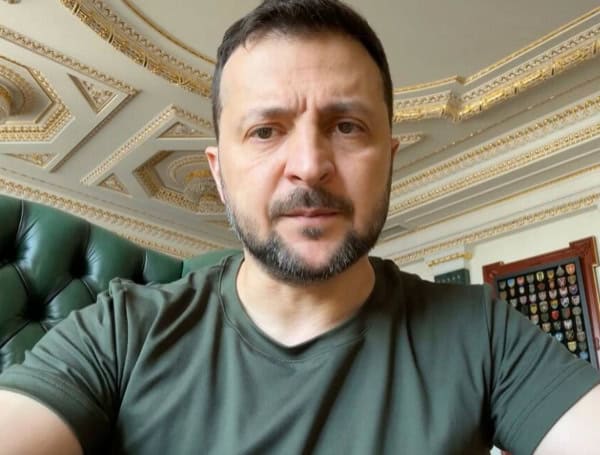
Russia carried out a massive strike on Ukraine’s energy infrastructure Thursday, plunging millions into darkness as winter temperatures approach freezing. The assault marks the second major attack this month and intensifies the strain on Ukraine’s energy grid.
Russian President Vladimir Putin claimed the strikes were in retaliation for Ukraine’s use of U.S.-supplied ATACMS missiles on Russian territory. Putin warned that future targets could include “decision-making centers” in Kyiv.
READ: Russian Forces Accused Of Executing Ukrainian POWs Amid Rising War Crimes Reports
Ukrainian President Volodymyr Zelenskyy condemned the strikes as a “despicable escalation,” accusing Moscow of deploying cruise missiles armed with cluster munitions.
“Now is the time to strengthen our positions—the position of Ukraine and our partners,” Zelenskyy said in his nightly address.
U.S. President Joe Biden denounced the attack as “outrageous,” urging continued support for Ukraine in its defense against Russian aggression. The assault caused immediate power cuts for over 1 million people, with millions more subjected to intensified rolling blackouts.
READ: Global Warnings Of Escalation As Russia Deepens Ties With Iran-Backed Houthis Amid Ukraine Conflict
Ukraine’s air force reported that Russia launched 91 missiles and 97 drones, of which 12 hit their targets, primarily energy and fuel facilities. Despite shooting down 79 missiles and 35 drones, officials acknowledged the limits of Ukraine’s air defenses against such large-scale attacks.
This attack raises concerns of prolonged power outages during the harsh winter months, exacerbating an already fragile energy system. Officials noted that this is the 11th major assault on Ukraine’s energy infrastructure since March, with nearly half of the country’s generating capacity damaged during the war.
“Russia has knocked out about half of Ukraine’s available power generation,” a source in the energy sector revealed. Ukraine’s nuclear power plants, which supply more than half of the nation’s electricity, were reportedly disconnected from the grid ahead of the attack as a protective measure.
In western Ukraine, regions like Lviv, Volyn, Rivne, Khmelnytskyi, and Zhytomyr faced widespread outages affecting hundreds of thousands. State oil and gas company Naftogaz reported its facilities had also been targeted. Emergency measures, including generators, were deployed to ensure hospitals, schools, and other critical infrastructure could maintain heat and water supplies.
READ: Russia Allegedly Recruits Yemeni Nationals To Fight Amid Growing Ties With Iran
Ukraine’s air force highlighted the sophisticated measures employed by Russia, including thermal and radar decoys and electronic warfare devices, which complicated the operation of Soviet-era air defense systems. Foggy weather further hindered efforts to intercept drones.
“Western systems are much more effective in such conditions,” the air force noted, reiterating the need for additional advanced equipment to cover Ukraine’s critical infrastructure.
The assault follows recent advancements by Russian ground forces, marking their fastest progress in two years. Moscow also recently deployed a hypersonic intermediate-range ballistic missile against Ukraine, escalating the conflict.
“Putin does not want peace. We must force him into peace through strength,” said Ukrainian Foreign Minister Andrii Sybiha, calling for increased air defense and long-range capabilities from Western allies.
Officials across Ukraine are working to mitigate the effects of the strikes on civilians. Generators are being used to provide emergency power for heating and water systems in critical facilities, as temperatures continue to drop.
Please make a small donation to the Tampa Free Press to help sustain independent journalism. Your contribution enables us to continue delivering high-quality, local, and national news coverage.
Android Users: Download our free app to stay up-to-date on the latest news.
Connect with us: Follow the Tampa Free Press on Facebook and Twitter for breaking news and updates.
Sign up: Subscribe to our free newsletter for a curated selection of top stories delivered straight to your inbox.
